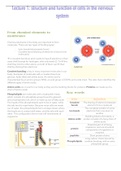Resume
Summary Political Structures and Processes of the European Union
- Établissement
- Vrije Universiteit Brussel (VUB)
Samenvatting gebaseerd op de hoorcolleges. Het eerste deel is gestructureerd per hoofdstuk, het tweede deel bevat dezelfde inhoud maar dan als mogelijke examenvraag antwoord.
[Montrer plus]











